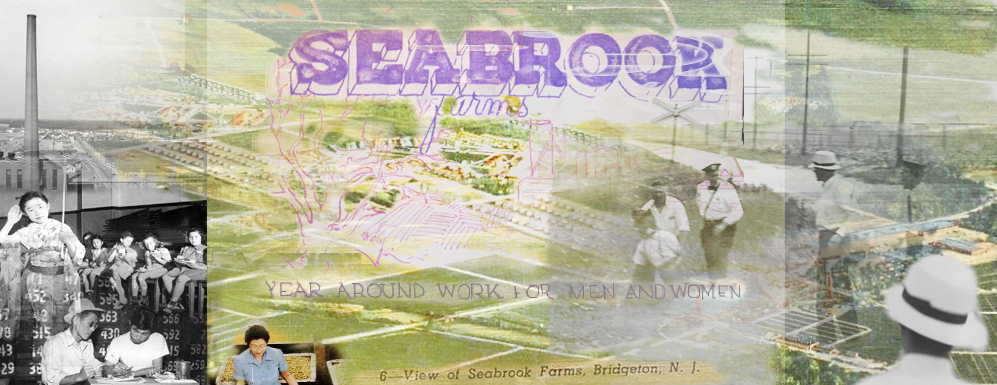
This exhibition explores Seabrook Farms' layered histories, focusing in particular on the relationship between captive labor and capitalism that defined the company's employment practices and government-backed hiring strategies during the Second World War and its immediate aftermath.
Famous for its frozen vegetables, by 1950 Seabrook Farms was the largest agribusiness in the United States, employing more than 6,000 seasonal and permanent laborers during peak production periods. Located in rural Upper Deerfield Township, approximately 30 miles south of Philadelphia, recruiting a sufficient supply of laborers had always been a challenge to the company. Military conscription and increased production demands caused by wartime contracts only exacerbated the situation. The war, however, also created opportunities for Seabrook to procure new sources of labor. This included approximately 2,500 American citizens (Nisei) and immigrants of Japanese descent (Issei) incarcerated in internment camps. While federal officials defended internment as a matter of national security, no evidence backed this claim, and no formal charges were ever brought against any of the detained. Internment reflected white Americans' longstanding belief that Japanese immigrants and their children were racially unassimilable.
At Seabrook, paroled internees worked alongside immigrant guestworkers from the Caribbean, migrant laborers contracted from the American South, and a small contingent of German POWs, groups whose freedom of mobility and job choice were similarly constrained. After the war's end, Seabrook Farms would add to its ranks of workers Estonian Displaced Persons, whom the company sponsored as refugees. It would accept Japanese Peruvians brought to the United States and imprisoned by the federal government, who in 1946 faced deportation to Japan.
Seiichi Higashide,
Adios to Tears: The Memoirs of a Japanese-Peruvian Internee in the U.S.
Seabrook was at once a haven for groups with limited options and a site where control, surveillance, and discrimination continued. A company town, Seabrook owned the housing workers lived in, provided social services, operated the local school system, and sponsored sports teams, dances, and scout troops for its labor force and their families. Archival records demonstrate that Japanese Americans and Estonian refugees received a relatively favorable welcome from white residents in Bridgeton, New Jersey, the nearest sizeable town. As these groups' sponsor, Seabrook Farms promoted paroled internees and refugees as more desirable candidates for integration than black migrant laborers from the British West Indies and the American South, who were subject to hostility from the local white majority, treated as a transient workforce, and paid lower wages by the company.
Curating this exhibit, we have grappled with the contradictions that Seabrook represents as a place of both safety and captivity. We have tried to move beyond a narrative that is narrowly celebratory, which has been the dominant mode of interpreting Seabrook to date. We have juxtaposed archival sources not typically used in presenting Seabrook's history with images that were commissioned in the 1940s and 1950s by the company's official Photographic Department. To these ends, we hope that the exhibition provides viewers with a foundation for coming to their own invariably complex and nuanced conclusions.